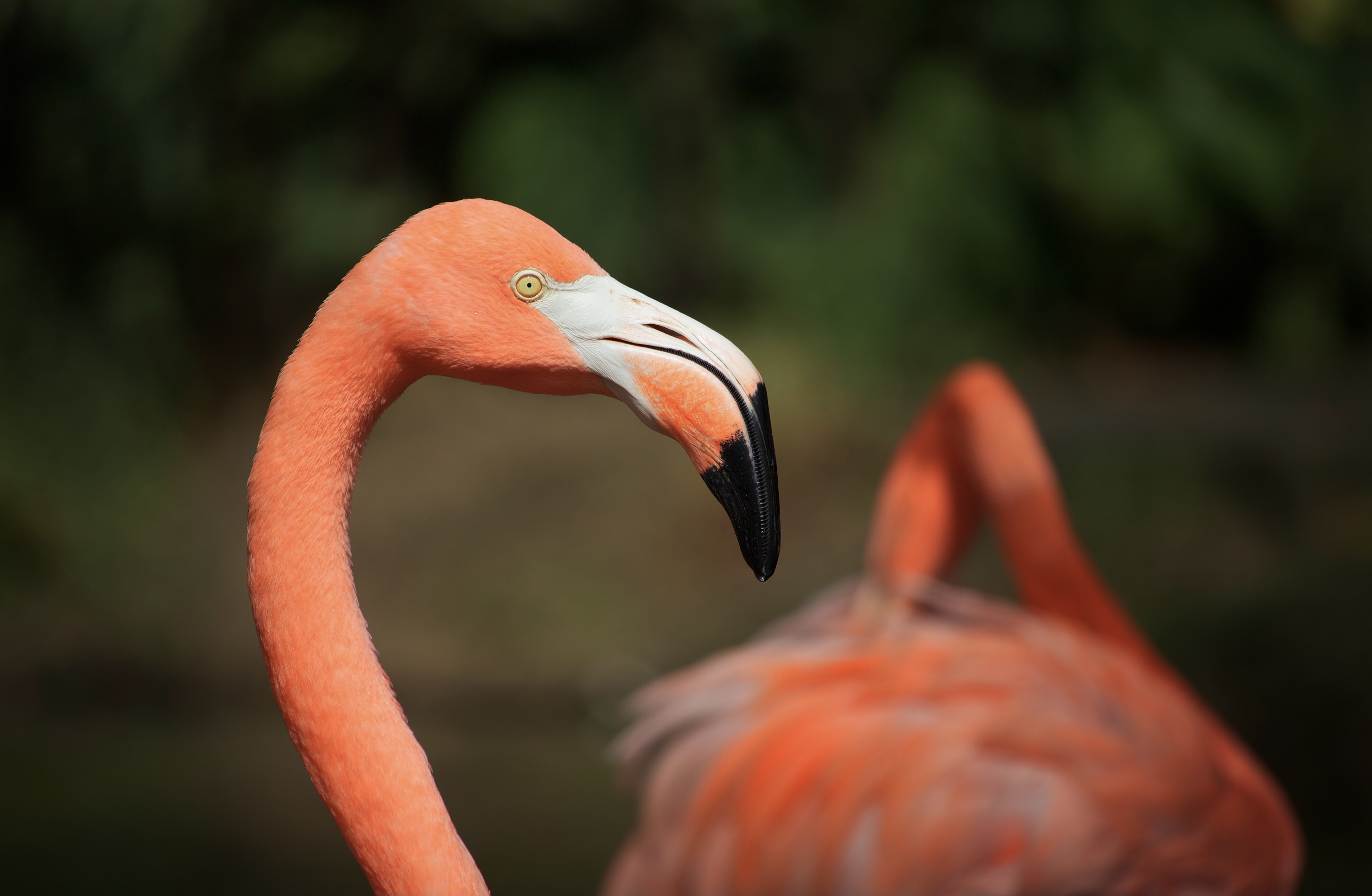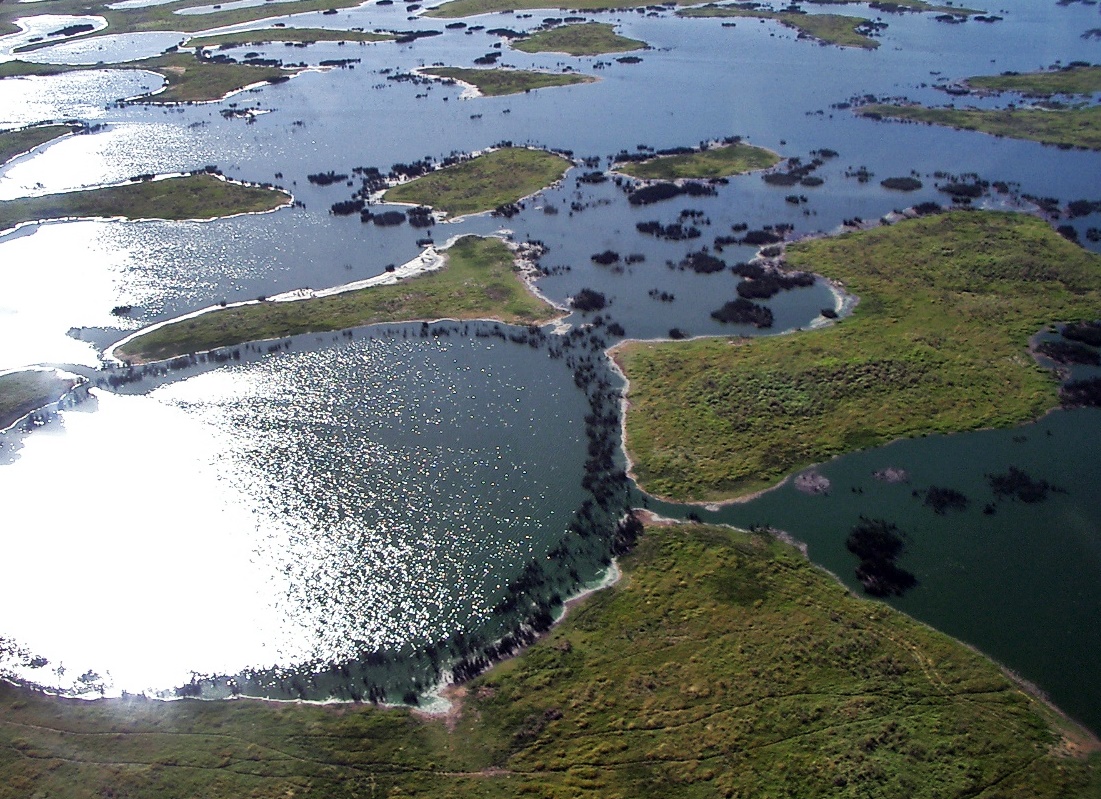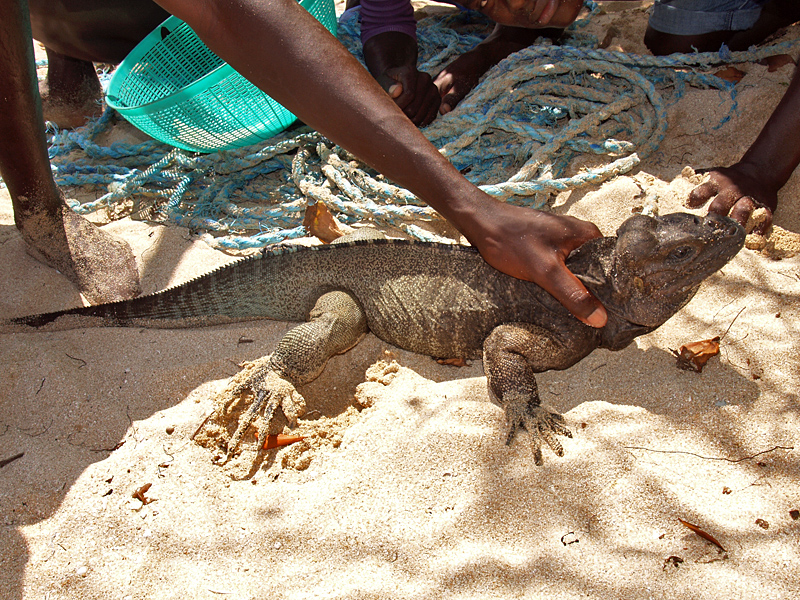|
Enriquillo Wetlands
The Enriquillo wetlands are a flooded grasslands and savannas ecoregion on the island of Hispaniola. They cover about around several low-lying lakes in southwestern Hispaniola in both the Dominican Republic and Haiti. Geography The Enriquillo wetlands occupy a depression in the southwestern portion of the island, surrounding several lakes. The largest of the lakes is hyper-saline Lake Enriquillo in the Dominican Republic. The surface of Lake Enriquillo is about 44 meters below sea level. Other lakes include freshwater Rincón Lake in the Dominican Republic, and saltwater Etang Saumâtre and freshwater Trou Caïman in Haiti. Flora Principal wetland plants around Lake Enriquillo are the buttonwood mangrove (''Conocarpus erectus''), cattails (''Typha domingensis''), saltwort (''Batis maritima''), and the purslane '' Sesuvium portulacastrum''.BirdLife International (2020) Important Bird Areas factsheet: Enriquillo Lake National Park. Downloaded from http://www.birdlife.org ... [...More Info...] [...Related Items...] OR: [Wikipedia] [Google] [Baidu] |
Neotropical Realm
The Neotropical realm is one of the eight biogeographic realms constituting Earth's land surface. Physically, it includes the tropical terrestrial ecoregions of the Americas and the entire South American temperate zone. Definition In biogeography, the Neotropic or Neotropical realm is one of the eight terrestrial realms. This realm includes South America, Central America, the Caribbean islands, and southern North America. In Mexico, the Yucatán Peninsula and southern lowlands, and most of the east and west coastlines, including the southern tip of the Baja California Peninsula are Neotropical. In the United States southern Florida and coastal Central Florida are considered Neotropical. The realm also includes temperate southern South America. In contrast, the Neotropical Floristic Kingdom excludes southernmost South America, which instead is placed in the Antarctic kingdom. The Neotropic is delimited by similarities in fauna or flora. Its fauna and flora are distinct ... [...More Info...] [...Related Items...] OR: [Wikipedia] [Google] [Baidu] |
American Flamingo
The American flamingo (''Phoenicopterus ruber'') is a large species of flamingo closely related to the greater flamingo and Chilean flamingo native to the Neotropics. It was formerly considered conspecific with the greater flamingo, but that treatment is now widely viewed (e.g. by the American and British Ornithologists' Unions) as incorrect due to a lack of evidence. It is also known as the Caribbean flamingo, although it is also present in the Galápagos Islands. It is the only flamingo that naturally inhabits North America. Distribution The American flamingo breeds in South America (in the Galápagos Islands of Ecuador, coastal Colombia and Venezuela, and northern Brazil), in the West Indies (Trinidad and Tobago, Cuba, Jamaica, Hispaniola (the Dominican Republic and Haiti), The Bahamas, the Virgin Islands, and the Turks and Caicos Islands), and tropical areas of continental North America (along the northern coast of the Yucatán Peninsula in Mexico, and Cameron Parish, Louis ... [...More Info...] [...Related Items...] OR: [Wikipedia] [Google] [Baidu] |
Geography Of Hispaniola
Geography (from Ancient Greek, Greek: , ''geographia''. Combination of Greek words ‘Geo’ (The Earth) and ‘Graphien’ (to describe), literally "earth description") is a field of science devoted to the study of the lands, features, inhabitants, and phenomena of Earth. The first recorded use of the word γεωγραφία was as a title of a book by Greek scholar Eratosthenes (276–194 BC). Geography is an all-encompassing discipline that seeks an understanding of Earth and world, its human and natural complexities—not merely where objects are, but also how they have changed and come to be. While geography is specific to Earth, many concepts can be applied more broadly to other celestial bodies in the field of planetary science. One such concept, the Tobler's first law of geography, first law of geography, proposed by Waldo Tobler, is "everything is related to everything else, but near things are more related than distant things." Geography has been called "the worl ... [...More Info...] [...Related Items...] OR: [Wikipedia] [Google] [Baidu] |
Flooded Grasslands And Savannas
Flooded grasslands and savannas is a terrestrial biome of the WWF biogeographical system, consisting of large expanses or complexes of flooded grasslands. These areas support numerous plants and animals adapted to the unique hydrologic regimes and soil conditions. Large congregations of migratory and resident waterbirds may be found in these regions. However, the relative importance of these habitat types for these birds as well as more vagile taxa typically varies as the availability of water and productivity annually and seasonally shifts among complexes of smaller and larger wetlands throughout a region. This habitat type is found on four of the continents on Earth. Some globally outstanding flooded savannas and grasslands occur in the Everglades, Pantanal, Lake Chad flooded savanna, Zambezian flooded grasslands, and the Sudd. The Everglades, with an area of , are the world's largest rain-fed flooded grassland on a limestone substrate, and feature some 11,000 species of ... [...More Info...] [...Related Items...] OR: [Wikipedia] [Google] [Baidu] |
Ecoregions Of Haiti
An ecoregion (ecological region) or ecozone (ecological zone) is an ecologically and geographically defined area that is smaller than a bioregion, which in turn is smaller than a biogeographic realm. Ecoregions cover relatively large areas of land or water, and contain characteristic, geographically distinct assemblages of natural communities and species. The biodiversity of flora, fauna and ecosystems that characterise an ecoregion tends to be distinct from that of other ecoregions. In theory, biodiversity or conservation ecoregions are relatively large areas of land or water where the probability of encountering different species and communities at any given point remains relatively constant, within an acceptable range of variation (largely undefined at this point). Three caveats are appropriate for all bio-geographic mapping approaches. Firstly, no single bio-geographic framework is optimal for all taxa. Ecoregions reflect the best compromise for as many taxa as possible. Se ... [...More Info...] [...Related Items...] OR: [Wikipedia] [Google] [Baidu] |
Ecoregions Of The Dominican Republic
An ecoregion (ecological region) or ecozone (ecological zone) is an ecologically and geographically defined area that is smaller than a bioregion, which in turn is smaller than a biogeographic realm. Ecoregions cover relatively large areas of land or water, and contain characteristic, geographically distinct assemblages of natural communities and species. The biodiversity of flora, fauna and ecosystems that characterise an ecoregion tends to be distinct from that of other ecoregions. In theory, biodiversity or conservation ecoregions are relatively large areas of land or water where the probability of encountering different species and communities at any given point remains relatively constant, within an acceptable range of variation (largely undefined at this point). Three caveats are appropriate for all bio-geographic mapping approaches. Firstly, no single bio-geographic framework is optimal for all taxa. Ecoregions reflect the best compromise for as many taxa as possible. Se ... [...More Info...] [...Related Items...] OR: [Wikipedia] [Google] [Baidu] |
Ecoregions Of The Caribbean
An ecoregion (ecological region) or ecozone (ecological zone) is an ecologically and geographically defined area that is smaller than a bioregion, which in turn is smaller than a biogeographic realm. Ecoregions cover relatively large areas of land or water, and contain characteristic, geographically distinct assemblages of natural communities and species. The biodiversity of flora, fauna and ecosystems that characterise an ecoregion tends to be distinct from that of other ecoregions. In theory, biodiversity or conservation ecoregions are relatively large areas of land or water where the probability of encountering different species and communities at any given point remains relatively constant, within an acceptable range of variation (largely undefined at this point). Three caveats are appropriate for all bio-geographic mapping approaches. Firstly, no single bio-geographic framework is optimal for all taxa. Ecoregions reflect the best compromise for as many taxa as possible. Sec ... [...More Info...] [...Related Items...] OR: [Wikipedia] [Google] [Baidu] |
Hispaniolan Slider
The Hispaniolan slider (''Trachemys decorata'') or Haitian slider is a species of turtle in the family Emydidae found on the island of Hispaniola (Haiti and the Dominican Republic). Habitat The Hispaniolan slider is a freshwater turtle. They can live on land and water, but prefer to be near freshwater. Conservation These sliders are not on the endangered list, but are considered vulnerable. Diet They have a particular diet that consists of insects (crickets), fish, vegetation, etc. When kept in captivity, they can eat all of the same foods that they would eat normally, as well as turtle pellets, carrots, tomatoes, peeled grapes, and spinach. Appearance Unlike red-eared slider The red-eared slider or red-eared terrapin (''Trachemys scripta elegans'') is a subspecies of the pond slider (''Trachemys scripta''), a semiaquatic turtle belonging to the family Emydidae. It is the most popular pet turtle in the United States, ...s, they do not have red patches on their heads. The ... [...More Info...] [...Related Items...] OR: [Wikipedia] [Google] [Baidu] |
Cyclura Ricordii
''Cyclura ricordii'', also known as Ricord's ground iguana or Ricord's rock iguana, is an endangered species of medium-sized rock iguana, a large herbivorous lizard. It is endemic to the island of Hispaniola (in both Haiti and the Dominican Republic). It is known to coexist with the nominate subspecies of the rhinoceros iguana (''C. cornuta cornuta''); the two species are the only taxa of rock iguana to do so. The natural habitats of its three subpopulations are hot, dry, wooded savanna on limestone with access to soil and sandy flats in southern Hispaniola. It is threatened by predation by introduced predators and habitat loss, due to overgrazing and charcoal manufacture. Taxonomy The specific epithet ''ricordii'' commemorates the French doctor Alexandre Ricord who sent the first specimen to Paris. In 1837 ''Cyclura ricordii'' was described as a species new to science by André Marie Constant Duméril and Gabriel Bibron, who at that time named it ''Aloponotus ricordii''. In 1843 ... [...More Info...] [...Related Items...] OR: [Wikipedia] [Google] [Baidu] |
Rhinoceros Iguana
The rhinoceros iguana (''Cyclura cornuta'') is an endangered species of iguana that is endemic to the Caribbean island of Hispaniola (shared by Haiti and the Dominican Republic) and its surrounding islands. A large lizard, they vary in length from , and skin colours range from a steely grey to a dark green and even brown. Their name derives from the bony-plated pseudo-horn or outgrowth which resembles the horn of a rhinoceros on the iguana's snout. It is known to coexist with the Ricord's iguana (''C. ricordii''); the two species are the only taxa of rock iguana to do so. Taxonomy The rhinoceros iguana is a species of lizard belonging to the genus ''Cyclura''. The rhinoceros iguana's specific name, ''cornuta'', is the feminine form of the Latin adjective ''cornutus'', meaning "horned" and refers to the horned projections on the snouts of males of the species. The species was first identified by Pierre Joseph Bonnaterre in 1789. In addition to the nominate race (''C. c. cornuta ... [...More Info...] [...Related Items...] OR: [Wikipedia] [Google] [Baidu] |
American Crocodile
The American crocodile (''Crocodylus acutus'') is a species of crocodilian found in the Neotropics. It is the most widespread of the four extant species of crocodiles from the Americas, with populations present from South Florida and the coasts of Mexico to as far south as Peru and Venezuela. The habitat of the American crocodile consists largely of coastal areas. It is also found in river systems, but tends to prefer salinity, resulting in the species congregating in brackish lakes, mangrove swamps, lagoons, cays, and small islands. Other crocodiles also have tolerance to saltwater due to salt glands underneath the tongue, but the American crocodile is the only species other than the saltwater crocodile to commonly live and thrive in saltwater. They can be found on beaches and small island formations without any freshwater source, such as many cays and islets across the Caribbean. They are also found in hypersaline lakes; one of the largest known populations inhabits Lago Enriq ... [...More Info...] [...Related Items...] OR: [Wikipedia] [Google] [Baidu] |
Roseate Spoonbill
The roseate spoonbill (''Platalea ajaja'') is a gregarious wading bird of the ibis and spoonbill family, Threskiornithidae. It is a resident breeder in both South and North America. Taxonomy The roseate spoonbill is sometimes placed in its own genus - ''Ajaia''. A 2010 study of mitochondrial DNA of the spoonbills by Chesser and colleagues found that the roseate and yellow-billed spoonbills were each other's closest relatives, and the two were descended from an early offshoot from the ancestors of the other four spoonbill species. They felt the genetic evidence meant it was equally valid to consider all six to be classified within the genus ''Platalea'' or alternatively the two placed in the monotypic genera ''Platibis'' and ''Ajaia'', respectively. However, as the six species were so similar morphologically, keeping them within the one genus made more sense. Description The roseate spoonbill is long, with a wingspan and a body mass of . The tarsus measures , the culmen mea ... [...More Info...] [...Related Items...] OR: [Wikipedia] [Google] [Baidu] |





